Antarctica destinations
Region
Highlights
-
Show more
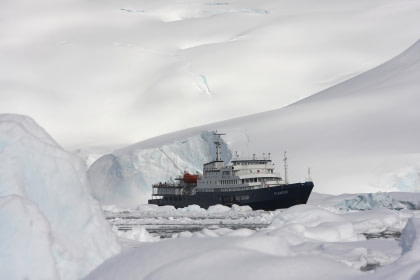
Antarctic Circle
This border, that is located at Latitude 66° 33′ South, marks the Antarctic Territory according to one of the definitions.
The Antarctic Circle experiences a period of 24 hours where the Sun is above the horizon during the summer solscice on 21st December. The reason for this phenomenon is that the axis of the earth is tilted by 23.5 degrees.
South of the Polar Circle at Detaille Island in Crystal Sound is the farthest south that we will probably reach at Latitude 66°52' South.

Cape Verde
The islands are all very different in landscape and some even in climate. The island of Fogo is volcanically the most active of all the islands.
Cape Verde is located at Latitude 27º North, which means the archipelago is situated within the Tropics. The climate on Cape Verde is milder though, less hot than the climate of the African mainland due to the fact that the islands are surrounded by ocean. The summer temperatures range from 25º to 29º C (77º to 84ºF). The islands see little rain and are therefore dry to very dry.
Mount Fogo, 2829 metres (9280 feet) high, is the highest peak of Cape Verde. The volcano is still active: it last erupted in 1675. Near its peak is a caldera, inside of which is a village. The capital of Cape Verde is the city of Praia, on the island of Sao Tiago (Santiago).
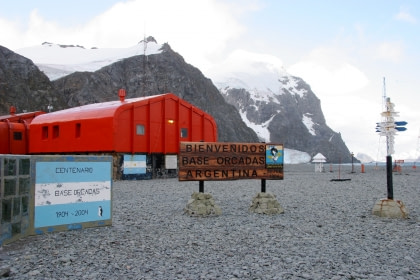
South Orkney Islands
They were named, together with the South Shetland Islands, after the islands in northern Scotland by the Scottish sealers that frequented the area.
The islands were discovered only in 1821 when they were sighted by the respectively British and American sealers George Powell and Nathaniel Palmer. The islands consist mainly of rock and ice (85 % is glaciated), with little vegetation. Argentina and the United Kingdom have scientific stations on the islands, the Orcadas Station and Signy Station.
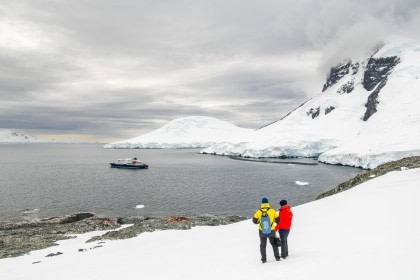
Antarctic Peninsula
Here it continues as a mainly sub-marine ridge, the Scotia Ridge, until it comes above sea-level at the northern tip of the Antarctic Peninsula.
The peninsula consists of an 800 kilometres (500 mile) long mountain chain, the highest peaks rising to approximately 2,800 metres (9,186 feet), and numerous off-lying islands. The Peninsula offers the most dramatic scenery and biggest variety of wildlife in Antarctica. Visitors are easily overcome by sensory overload by the huge amount of ice-bergs.
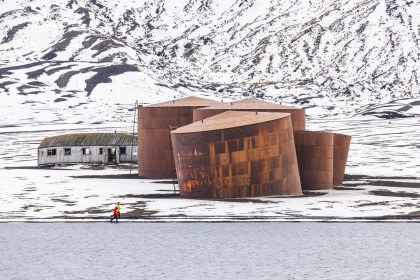
South Shetland Islands
The archipelago consists of 11 major islands and numerous smaller ones. They are mainly mountainous and more than 80% glaciated. The islands are of volcanic origin. Although the islands might have been sighted before, the first recorded sighting is that of William Smith, a British sailor whose ship was blown off course while rounding Cape Horn in 1819. Soon after, seal hunters frequented the islands in search of Fur Seals.

Ross Sea
The Ross Sea is a giant bay found south by south-east from New Zealand. Home of at least 10 species of mammal, 6 dozen species of birds, nearly a hundred types of fish, and around 1000 examples of invertebrate species. The Ross Sea is one of the few expanses of salt water that has been left (relatively) free of human impact.
Travellers to the Ross Sea are greeted by a massive geographical wonder – the Ross Ice Shelf. The shelf, roughly the size of France, is in fact part of a massive glacier that runs back onto the continent. The Shelf, referred to as the Ross Barrier by explorers like Shackleton and Scott, runs 700 km long at its northern end and towers 15-50 metres above the water.
Passengers aboard one of our Ross Sea Journeys will travel along the southern parts of the Antarctic Peninsula, Peter I Island, the Bellingshausen and Amundsen Seas into the Ross Sea. Visiting the Ross Ice-shelf, Dry Valleys, McMurdo Station, Campbell Island and the historic huts of discovery voyagers Scott and Shackleton. Ortelius will be equipped with helicopters. Be prepared for an unforgettable memory.

Weddell Sea
The Weddell Sea extents far south and is therefore under the direct influence of the very cold Antarctic Continental Climate. The continental borders of the Weddell Sea are formed by huge floating sheets of ice. These ice-shelves produce the huge tabular ice-bergs that are so abundant in the Weddell Sea. Scientists have declared the waters of the Weddell Sea to be the clearest water of any sea on Earth. The clarity of the water is on par with distilled water.
The Weddell Sea is frequented by a large number of Orcas, Humpback, and Minke Whales as well as Leopard, Weddell, and Crabeater Seals. The area is also home to a large number of penguins, namely the Adelie Penguins - who have a colony of more than 100,000 breeding pairs - which nest on Paulet Island. Recently a colony of Emperor Penguins was also found nearby on Snowhill Island.
The Weddell Sea was discovered by the British sealer James Weddell in 1823.
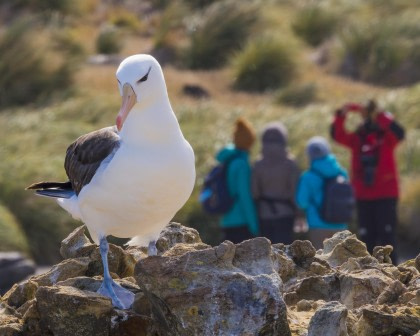
Falkland Islands
Join a Falkland Islands cruise and enter a bird lover’s paradise
Few places provide such a winning combination of terrain and birdlife as the Falklands, and few trips offer so many opportunities for unforgettable adventure as a cruise to the Falklands – especially for those who love birds.
Over 60 distinct species of bird breed on the Falkland Islands, and in fact over 80% of the world’s black-browed albatrosses can be found there. As for penguins, you have the chance to spot multiple species during a cruise to the Falklands: gentoos, kings, macaronis, rockhoppers, and Magellanics call these islands home.
But bird life is not the only wildlife you could see on a Falklands trip. Seals and whales are also commonly spotted in or near these wildlife-rich waters, making even the sea legs or shore visits of a Falklands cruise memorable.
Specifically, fur seals, elephant seals, and sea lions may appear on a trip to the Falklands. As for the larger species you might encounter during a Falklands cruise, these range from sei whales to sperm whales, porpoises to dolphins, and maybe even orcas.
Join us on a cruise to the Falklands, a bird lover’s dream come true and the ideal place to unleash your inner explorer.
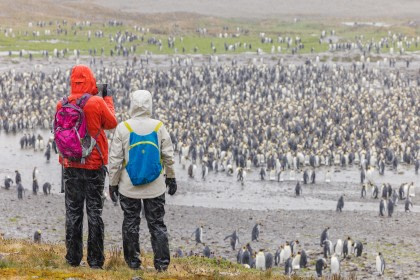
South Georgia
South Georgia is home to two mountain ranges – the Salvesen and the Allardyce – which soar to a peak of almost 3,000 metres above the sea. In the summer almost 75% of the island is covered in snow, ice, and glaciers. Come winter, a covering of snow reaches right down to the water’s edge.
The island is also called an Antarctic Oasis because of the huge numbers of penguins and seals that breed here. The marine ecosystem is considered one of the densest examples of biodiversity in the world. Visitors can spot seals on both the land and in the waters, and a variety of whales pass through the area.
South Georgia is one of the remotest and wildest places on earth.

Ascension Island
The few visitors were deterred from settling due to the aridity. It was eventually occupied in 1815 by the British who wished to prevent any possible use by the French for an attempt to release Napoleon from St. Helena.

St. Helena
All the early visitors, and indeed all visitors up to the present, with the exception of Napoleon, seem to have been impressed with the island. Because of its situation, offering a convenient refreshment station, there were continual efforts made by the Portuguese, the Dutch and the English to secure it.

Tristan da Cunha
Tristan da Cunha is a very special place, an active volcano on which people live, located in the middle of the South Atlantic Ocean. The island is often called the most remote inhabited island of the world but is also famous for its specific Tristan culture, its natural beauty and the large number of seabirds that breed there.
